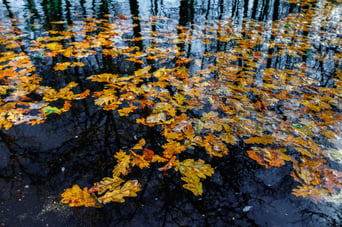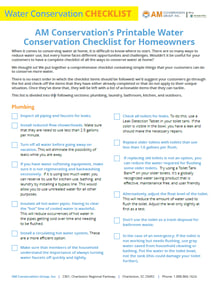Over the past 15 years, droughts ranging in severity from “abnormally dry” to extreme have plagued every state and region in the United States.
New York experienced brief periods of moderate drought in May this year, as did South Carolina, AM Conservation Group’s home state. Additionally, the Southern, Southeastern, Midwestern, and MidAtlantic states have all experienced numerous droughts within the past five years.

Though droughts come and go in some regions, sometimes resolving themselves within weeks, other regions are hit harder. California, for example — America’s largest agricultural producer — has been in a nearly continuous state of severe or extreme drought since 2007.
On a national and global scale, droughts are only going to worsen. A number of organizations and agencies — including the MIT Joint Program on the Science and Policy of Global Change, the Intergovernmental Panel on Climate Change (IPCC), and the Environmental Protection Agency (EPA) — predict that global warming will increase both the frequency and severity of droughts, particularly in the Southern and Western United States.
Texas and California, among the states hit hardest by this decade’s droughts, have grim predictions. The Texas State Water Plan predicts that only 75% of water needs will be able to be met by 2060; in California, water reserves could run out as soon as within 12 months.
As advancing global warming continues to worsen droughts across the United States, water conservation becomes more important than ever. Even if your constituency is in a relatively unaffected area such as the Northeast, their conservation efforts can help the country as a whole.
Here are 5 great water conservation tips that your constituents can put into effect this fall.
Take stock of your water usage habits
Even if you’re careful about your water usage in the home, chances are that there are important steps you’re not taking and factors that you’re not considering. As the air begins to cool, for example, you may enjoy taking a few extra minutes in a hot shower.
Standard shower heads use more than two gallons of water a minute — even a small amount of extra shower time every day adds up to large water waste. There are a number of products, such as flow meter bags, that can help you gauge your water usage. It’s easier to control your usage when you know your usage.
Water your plants less often
The cooler temperatures and increased rainfall of the Autumn months indicates that plants, indoors and outdoors, require less water. Rain gauges and moisture meters can help homeowners determine ideal watering times, and hose times and efficient nozzles can help reduce water use.
Install efficient faucets and shower heads
While not running water needlessly — such as turning off the flow when scrubbing dishes, especially after large meals like Thanksgiving celebrations — is a good step, many households can further increase their water efficiency. Faucet aerators and high efficiency shower heads are great products for reducing wasted water.
Upgrade your toilets
Toilets are the number one water waster in a home, making high efficiency toilets an excellent way to reduce unnecessary water waste in a home. If you’re unable to replace your toilets for any reason, you can use toilet tank banks, toilet tank dams, or fill cycle diverters to reduce the amount of water used per flush.
Check behind the scenes
Check all faucets and, wherever possible, pipes for leaks. A single drip may seem insignificant, but that volume adds up — a single dripping faucet can waste more than 3,000 gallons a year. To check for leaks in hidden pipes, monitor your water meter for two or more hours at a time when no water is being used — if the meter reading has gone up, there is a leak.
These tips are just the tip of the water conservation iceberg. They are good places to start, but they are just that — starting places. There are a myriad of different ways for your constituents to conserve water at home.
To learn more, download AM Conservation Group’s Water Conservation Checklist for Homeowners for free today.







